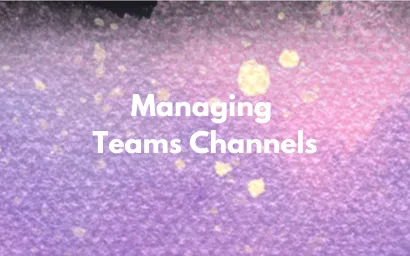
Microsoft Teams Channel Management
Microsoft Teams Channel Management
By: Kas Nowicka
Managing channels effectively in Microsoft Teams is crucial for fostering organized and efficient collaboration within your team.
Channels serve as dedicated spaces for specific topics, projects, or departments, helping to streamline communication and ensure that information is easily accessible.
In this article, I will share practical tips for channel management, including best practices, common pitfalls to avoid, some commentary on the impact and actionable steps to enhance your team’s productivity.
Different Types of Channels
Microsoft Teams offers three types of channels:
-
Standard Channels: Visible to all team members, ideal for topics relevant to the entire team.
-
Private Channels: Accessible only to a subset of team members, suitable for confidential discussions.
-
Shared Channels: Allow collaboration with individuals both inside and outside your organization without granting access to the entire team.
Best Practice: Choose the appropriate channel type based on the sensitivity and audience of the content.
What to Avoid: Using private channels for topics that should be transparent to all team members, as this can lead to information silos.
Example of general channel “General”, shared one “Creative Assets” and a private one “Timelines” in my environment

Plan Your Channel Structure Thoughtfully
A well-organized channel structure reflects your team’s workflow and makes navigation intuitive.
Best Practice: Create channels based on specific projects, departments, or themes. For example, a marketing team might have channels like “Social Media,” “Content Creation,” and “Analytics.”
What to Avoid: Overloading your team with too many channels, which can cause confusion. Leaving inactive channels for too long. Having duplicate channels covering the same topics. Letting team members create random, unstructured channels without approval.
Example of a well-structured sales team workspace:
-
Leads & Prospects — Discussions on potential clients and outreach strategies.
-
Customer Feedback — Collecting insights from existing clients.
-
Quarterly Targets — Performance updates and goal tracking.
For a project team, a clear channel structure could be:
-
Project Planning — Task assignments and scheduling.
-
Technical Discussions — Engineering and IT-related problem-solving.
-
Stakeholder Updates — Reports for management and external stakeholders.
Clear Channel Naming Conventions
Consistent naming conventions help team members quickly identify the purpose of each channel.
Best Practice: Use clear and descriptive names, such as “Project Alpha - Design” or “HR — Employee Benefits.”
What to Avoid: Using vague names like “Miscellaneous” or abbreviations that might not be universally understood.
Example of clear and intuitive structure in my Marketing Team. I am using emojis so users can also quickly and intuitively see what’s the channel about:
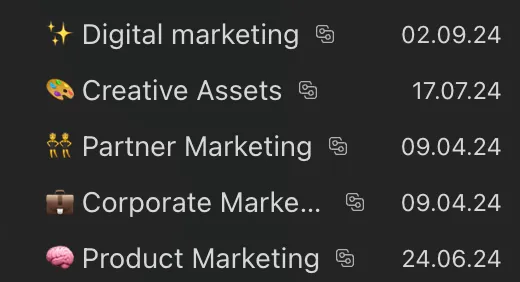
Managing Channel Permissions Appropriately
Controlling who can create and manage channels prevents unnecessary proliferation and maintains order.
Best Practice: Restrict channel creation to team owners or designated members. This can be configured in the team’s settings under “Member permissions.”
What to Avoid: Allowing all members to create channels without oversight, leading to channel sprawl.
You can find the Team setting by clicking the three dots next to a selected Team and then going to Manage Team.
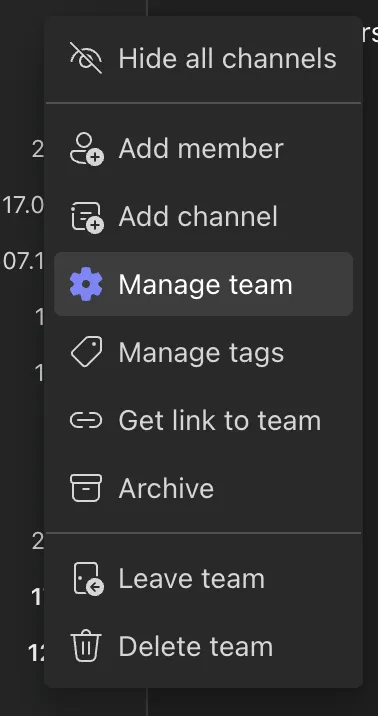
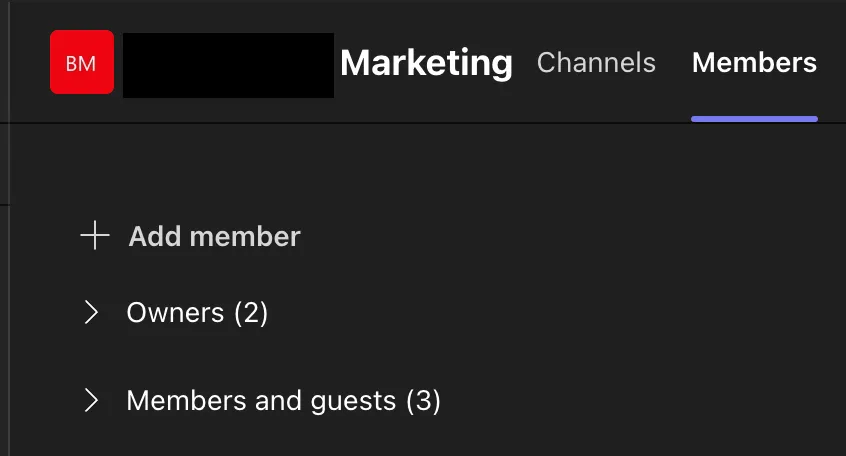
Utilize Channel Moderation Features
Channel moderation allows you to control who can start new posts and manage content within a channel.
Best Practice: Enable moderation in channels where it’s important to control the flow of information, such as announcement channels. Assign moderators to oversee discussions.
What to Avoid: Leaving moderation disabled in channels that require oversight, which can lead to off-topic or inappropriate posts.
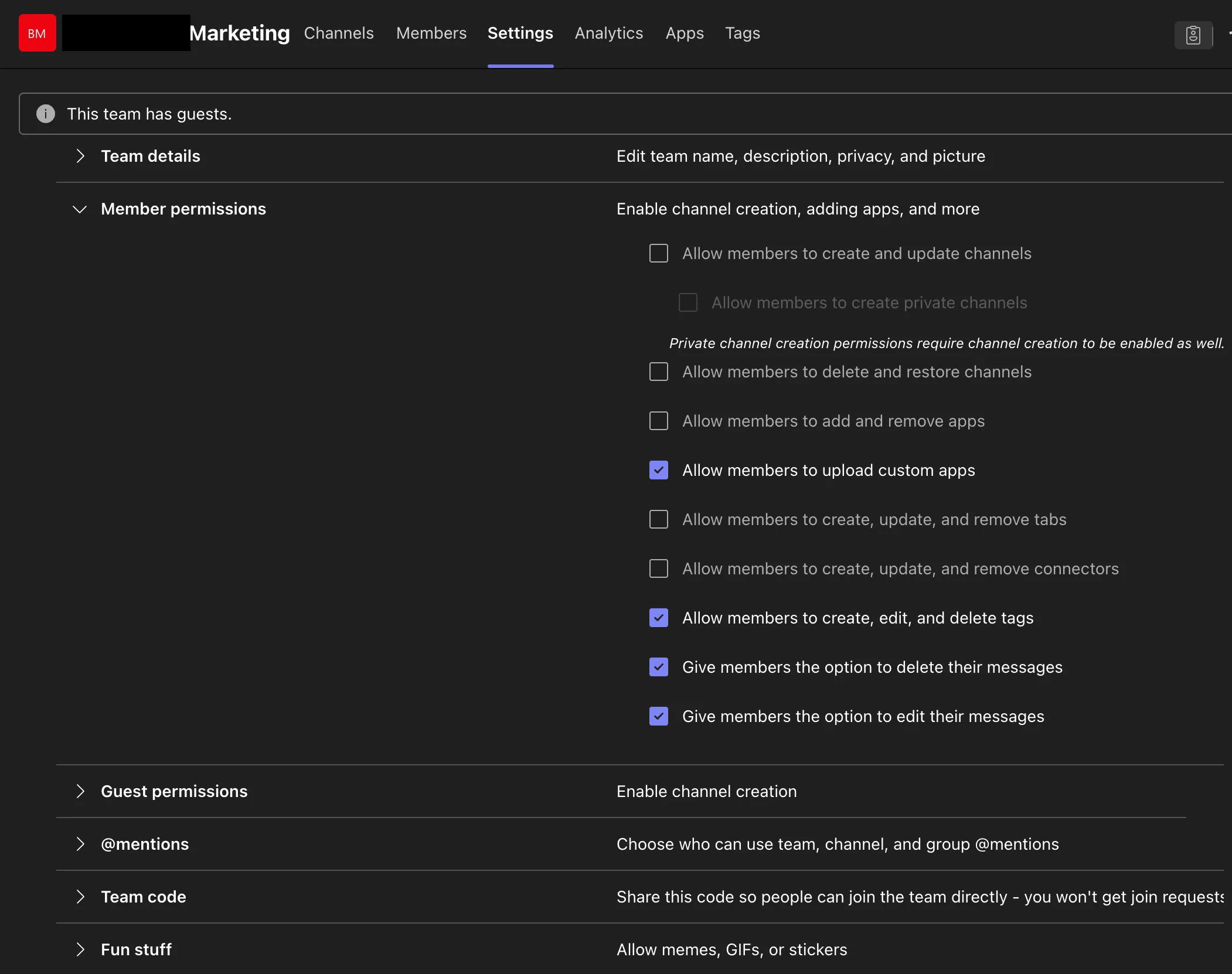
Leverage Tabs and Apps Within Channels
Enhance functionality by adding relevant tabs and apps to your channels.
Best Practice: Integrate tools like Planner for task management, OneNote for shared notes, or third-party apps that align with your team’s needs.
What to Avoid: Adding too many tabs or apps, which can clutter the channel and overwhelm team members.
Use of @Mentions and Notifications Wisely
In Microsoft Teams, @mentions and notifications are valuable tools for drawing attention to important messages, but their overuse can quickly become overwhelming. While they help ensure critical updates reach the right people, excessive notifications can lead to stress, distraction, and reduced productivity.
When used correctly, @mentions improve clarity in team communication by tagging individuals or groups only when their input is truly needed. Overusing these notifications, however, can create a constant sense of urgency and prevent employees from focusing on deep work.
When a person is bombarded with frequent notifications, it disrupts their natural workflow and increases stress levels. From a neuroscience perspective, notifications trigger the brain’s dopaminergic system, which is responsible for attention and reward processing. Every time a person hears a notification sound or sees a red badge indicator, the brain releases dopamine, linked to pleasure, motivation, and reinforcement. This mechanism is the same one that drives social media engagement, gambling behaviors, and habit formation.
However, frequent dopamine spikes followed by interruptions create a cognitive overload, leading to mental exhaustion and a lack of focus. When someone receives constant notifications, their brain is forced into context switching, where attention rapidly shifts between tasks. This is highly inefficient and has been shown to reduce productivity by up to 40% due to the time needed to regain focus.
Employees who constantly receive pings from Teams may feel a sense of urgency to respond immediately, even when the message is not critical. This fosters a reactionary work culture where people feel they need to be “always on”, making it difficult to detach from work even outside business hours…
Best Practice: Use @mentions to notify specific individuals or the entire channel when necessary. For example, “@DesignTeam Please review the latest draft.”. Set expectations: let your team know when @mentions should be used. Encourage people to mute channels they don’t need frequent updates from.
What to Avoid: Overusing @mentions, especially @team or @channel, as this can lead to notification fatigue.
Best Practices for @Mentions:
-
Use @Team only for critical updates that affect everyone.
-
Use @Channel for discussions relevant to the whole group.
-
Use @Person when you need input from a specific colleague.
Regularly Review and Clean Up Channels
Keeping your Teams environment tidy enhances efficiency.
The first step in cleaning up Microsoft Teams channels is conducting a thorough audit of the existing workspace. This involves identifying inactive channels by assessing recent activity, ensuring that each channel has an assigned owner responsible for its maintenance, and checking whether existing channels align with the team’s workflow. =
You can manage Teams channels through the Microsoft Teams Admin Center. Within the Admin Center, teams can be restructured, settings can be adjusted, and organization-wide policies can be enforced to prevent uncontrolled channel creation. Microsoft’s official documentation provides further guidance on how to navigate and utilize these tools effectively: https://learn.microsoft.com/en-us/microsoftteams/manage-apps
For teams requiring bulk operations or automated solutions, PowerShell scripts offer a powerful method for managing Microsoft Teams channels. Administrators can use the Remove-TeamChannel cmdlet to delete channels that are no longer needed, allowing for precise control over which content stays and which is removed.
Remove-TeamChannel -GroupId <String> -DisplayName <String>
Note: The channel will be “soft deleted”, meaning the contents are not permanently deleted for a time. So a subsequent call to Add-TeamChannel using the same channel name will fail if enough time has not passed.
For organizations looking to automate the cleanup process, custom scripts can be developed to track activity metrics and flag channels for archiving or deletion based on predefined rules. Additionally, scripts can be used to remove all messages and replies from a channel while keeping the structure intact, which is particularly useful when a reset is needed without removing the entire channel.
While built-in tools and PowerShell offer effective solutions, some organizations may benefit from third-party tools designed to enhance Teams management. Solutions like Teams Manager by Solutions2Share, or EasyLife 365 offer simple user-friendly apps to introduce governance and automated lifecycle management to prevent channel sprawl and ensure that teams remain organized.
Establish Governance Policies
Prevent future clutter by implementing clear governance policies:
-
Define Creation Policies: Restrict channel creation permissions to prevent unnecessary proliferation.
-
Set Expiry Dates: Implement expiration policies for teams and channels to ensure they are reviewed periodically for relevance.
-
Regular Reviews: Schedule regular audits to assess the necessity and activity of channels, archiving or deleting as appropriate.
Best Practice: Periodically assess channels for activity. Archive or delete channels that are no longer in use to keep the workspace relevant.
What to Avoid: Letting inactive channels accumulate, which can make navigation cumbersome and reduce overall productivity.
Educate Team Members on Channel Best Practices
Educating team members on Microsoft Teams channel best practices is a crucial step in maintaining an organized and efficient collaboration environment. Without proper training, users may unintentionally contribute to clutter, misuse private channels, or overuse notifications, leading to a chaotic workspace. By equipping employees with the right knowledge, organizations can significantly improve productivity and streamline communication.
How Long Should the Training Take?
The duration of Microsoft Teams training depends on the depth of knowledge required and the format of the training. A basic training session covering fundamental best practices for using channels, naming conventions, and notifications can be completed in 1 to 2 hours. More comprehensive training, including advanced features, governance policies, and automation, may take 4 to 8 hours, spread across multiple sessions or as a full-day workshop.
For ongoing training, short 15-30 minute refresher sessions every few months can reinforce best practices and introduce users to any new Teams features. Organizations with continuous Teams usage may also benefit from monthly or quarterly check-ins to ensure compliance with governance policies.
More information on training options coming soon. Stay tuned!
Best Practice: Provide training sessions or resources that cover channel functionalities, etiquette, and best practices.
What to Avoid: Assuming all members are familiar with Teams’ features, which can lead to inconsistent usage and misunderstandings.